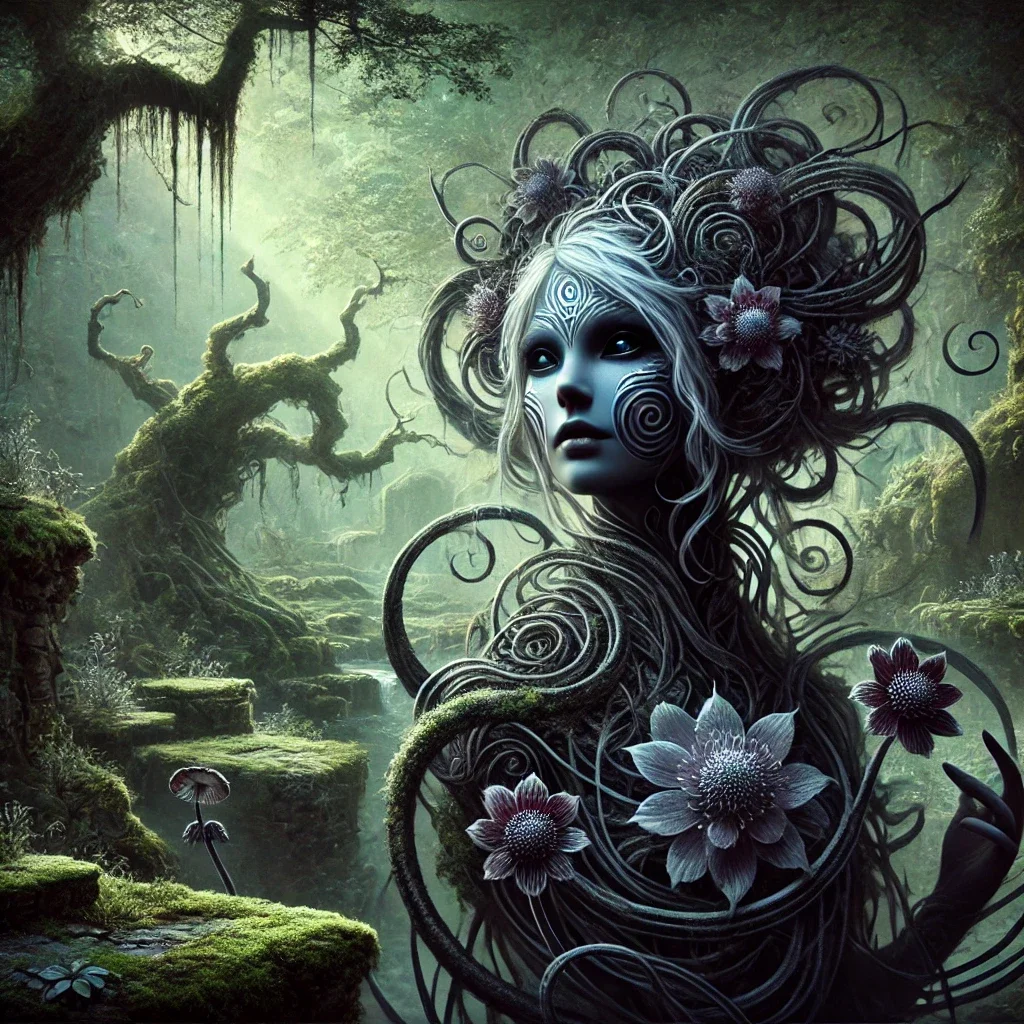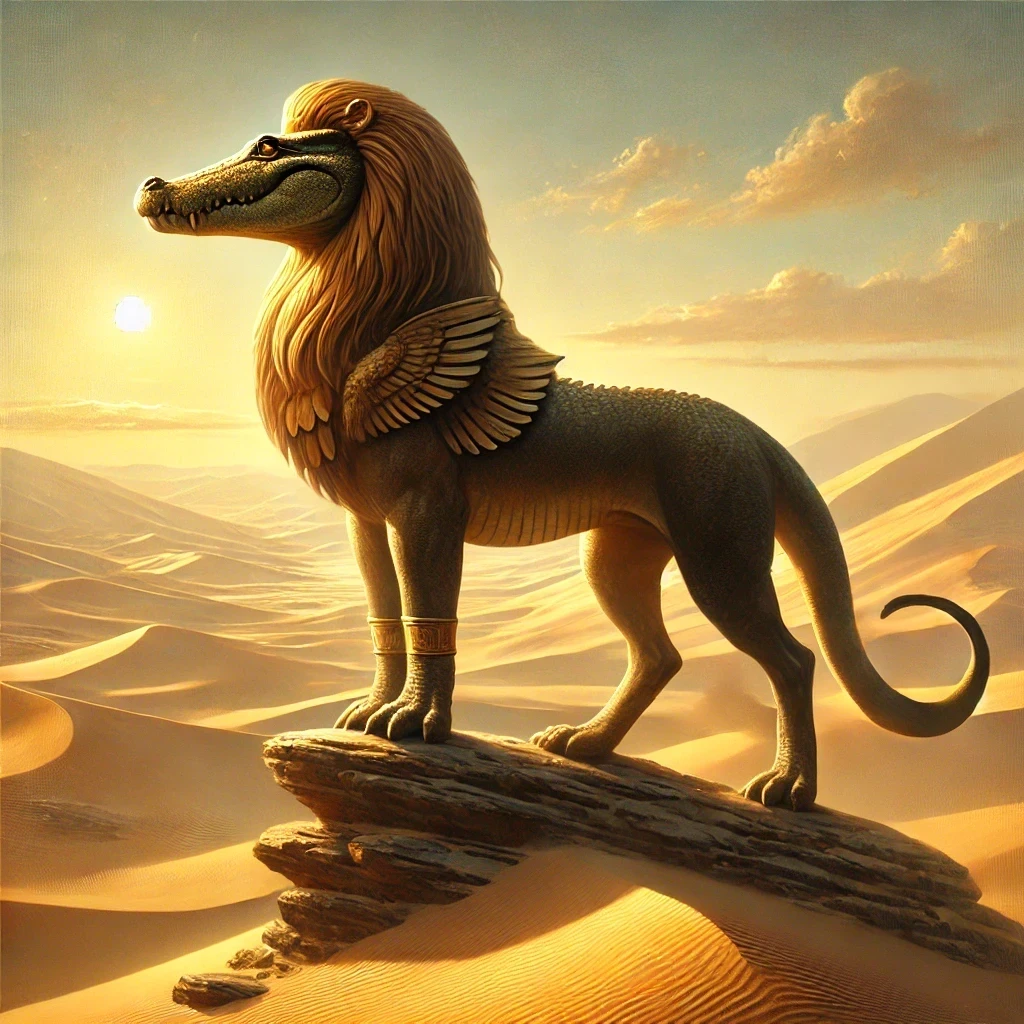In the shadows of ancient Egypt, where the Nile whispers secrets to the sands and pyramids cast their eternal gaze, there lurks a creature whose enigmatic presence has fueled tales of wonder and terror: the Akhekh. Shrouded in mystery, this serpentine beast straddles the worlds of myth and meaning.
Origins
The Akhekh’s roots delve deep into Egypt’s mythological tapestry, emerging as a symbol of chaos and protection. Ancient texts and artistic depictions from the New Kingdom period (circa 1550–1069 BCE) hint at its existence, particularly in conjunction with other creatures that embody disorder. Some scholars suggest the creature may have been inspired by real-life encounters with large reptiles, such as crocodiles or cobras, whose movements and behavior evoked awe and trepidation.
In the broader cosmology, the creature aligns with the concept of ma’at versus isfet—order versus chaos. It shares thematic parallels with the serpent Apep (Apophis), yet it occupies a more ambiguous role. While Apep is a direct adversary of Ra and a harbinger of chaos, the Akhekh is sometimes depicted as a creature subdued by divine forces, serving as a testament to the gods’ dominion over disorder.
Appearance
Depictions of the Akhekh vary across the centuries, reflecting Egypt’s evolving artistic conventions and mythological interpretations. Typically, the creature was portrayed as a composite beast, blending features from multiple animals to create a being both awe-inspiring and terrifying.
Features of the Akhekh
- Head: The creature’s head often took on the form of a serpent or crocodile, emphasizing its connection to Egypt’s sacred and fearsome reptiles.
- Body: Its elongated body resembled that of a lion or antelope, granting it a sense of agility and predatory power.
- Wings: Some depictions include large, feathered wings, likening the Akhekh to celestial or divine beings, capable of transcending earthly bounds.
- Tail: A serpentine tail, coiled and poised to strike, symbolized its deadly nature and association with chaos.
The Akhekh’s composite form made it a symbol of nature’s unpredictability, a stark contrast to the harmonious balance central to Egyptian cosmology.
Symbolism
The Akhekh is a creature of dualities, representing both peril and protection. In some contexts, it is a guardian figure, stationed at the thresholds of sacred spaces or depicted in amulets designed to ward off malevolent forces. Its fearsome visage was believed to deter harm, a living embodiment of the idea that chaos can be harnessed for protective purposes.
In other narratives, it embodies the unpredictability of the natural world—a reminder of the thin line between order and chaos. The Akhekh’s presence in art and lore often serves as a cautionary symbol, urging respect for the forces of nature and the divine authority that keeps them in check.
Abilities
The Akhekh’s mythological powers are as varied as its appearance. Chief among these is its ability to control or manipulate water, an attribute likely inspired by Egypt’s reliance on the Nile. This ability to command the lifeblood of the civilization—and the dangers it could bring—cemented its association with both sustenance and destruction.
Another notable power attributed to the creature is its capacity for inducing fear. Ancient texts describe how its gaze could paralyze foes, a trait shared by other legendary creatures like the basilisk. Some accounts also suggest it possessed venom potent enough to decimate entire villages, further emphasizing its lethal potential.
Tales
The Binding of the Akhekh
One prominent tale involves the god Thoth, the divine scribe, who encounters the creature while journeying through the Duat (the Egyptian underworld). The creature, enraged by intrusions into its domain, unleashes a torrent of venomous waters. Thoth, with his unmatched wisdom, traps the creature using hieroglyphic incantations, transforming it into a guardian of sacred texts.
The Nile’s Curse
Another legend tells of a village cursed by an Akhekh after the locals desecrated a sacred riverbank. The creature’s wrath brought drought and sickness, ceasing only when the villagers offered penance through elaborate rituals and an offering of gold-studded idols.
Relationships
Parallels with Apep suggest a shared lineage of serpentine chaos, though the Akhekh’s role as a more neutral entity sets it apart. It is sometimes depicted in the company of Sobek, the crocodile-headed god, symbolizing the duality of the Nile—both life-giving and perilous.
In some variations, the creature is subdued or commanded by Ra, the sun god, reinforcing the deity’s role as a bringer of order. This dynamic emphasizes the creature’s subjugation to divine will, a recurring theme in Egyptian cosmology.
Trivia
- The Akhekh’s depiction has been linked to the griffin, a creature from Greek mythology. This cross-cultural resemblance hints at the exchange of ideas between ancient civilizations.
- Amulets featuring the Akhekh were sometimes buried with the dead to protect them in the afterlife.
- Some modern cryptozoologists speculate that stories of the Akhekh may have originated from sightings of extinct reptiles or exaggerated accounts of living creatures.
FAQ
What is the Akhekh?
The Akhekh is a mythical creature from ancient Egyptian mythology, often depicted as a serpentine or composite beast associated with chaos and protection.
How is the Akhekh different from Apep?
While both creatures symbolize chaos, Apep is a direct antagonist to the sun god Ra, embodying cosmic disorder. The Akhekh, on the other hand, plays a more ambiguous role and is sometimes depicted as a protective figure.
Did the Akhekh inspire other myths?
Yes, its features and symbolism bear similarities to the griffin and other mythical creatures, suggesting cultural exchanges between Egypt and neighboring civilizations.
Is the Akhekh still relevant today?
Though not as well-known as other mythological beings, the Akhekh remains a fascinating figure in studies of ancient Egyptian culture and mythology, inspiring modern interpretations in art and literature.



